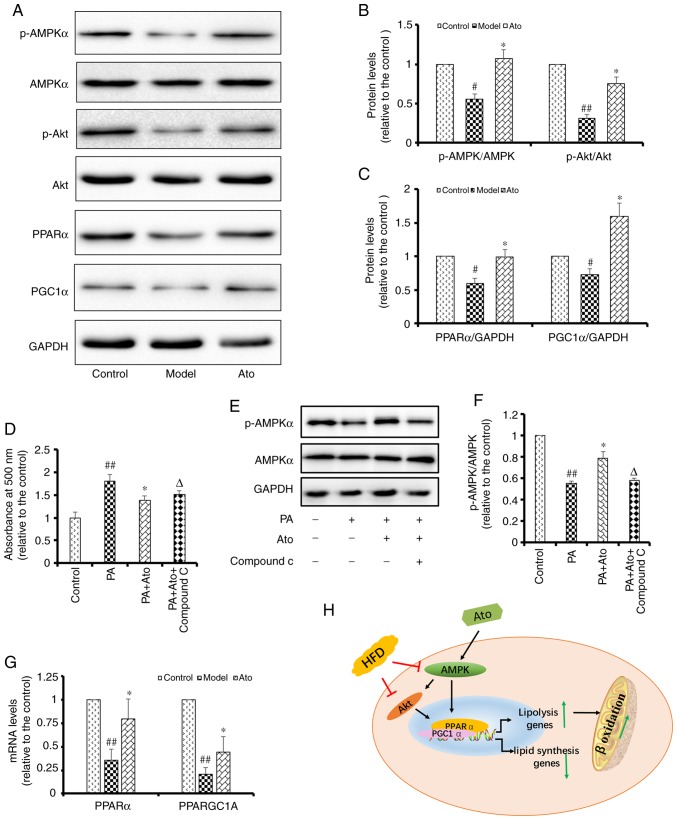Figure 6.
Ato inhibits lipid accumulation by promoting the AMPK signaling pathway. (A) Representative images of p-AMPK, AMPK, p-Akt, Akt, PPARα and PGC1α western blots. (B) Relative p-AMPK/AMPK, p-Akt/Akt and (C) PPARα/GAPDH and PGC1α/GAPDH protein levels are presented. #P<0.05, ##P<0.01 vs. control group; *P<0.05 vs. model group. (D) Lipid accumulation in HepG2 cells, quantified by the absorbance value of oil red O reagent at 490 nm. Data are presented as the mean ± SEM (n=6). (E) Representative images of p-AMPK and AMPK in PA-treated HepG2 cells with or without Ato and Compound C treatment. (F) Relative p-AMPK/AMPK protein levels. Data are presented as the mean ± SEM (n=3). ##P<0.01 vs. control group; *P<0.05 vs. PA group; ΔP<0.05 vs. PA + Ato group. (G) mRNA levels of PPARα and PPARGC1A in each group. Data are presented as the mean ± SEM (n=3/group). ##P<0.01 vs. control group; *P<0.05 vs. model group. (H) Schematic illustration showing the suggested mechanisms underlying the protective effect of Ato against non-alcoholic fatty liver disease. Ato, atorvastatin; p-, phosphorylated; PPARα, peroxisome proliferator activated receptor α; AMPK, AMP-activated protein kinase; PGC1α, peroxisome proliferator-activated receptor-γ coactivator 1 α; PPARGC1A, PPARG coactivator 1 α; PA, palmitate.

